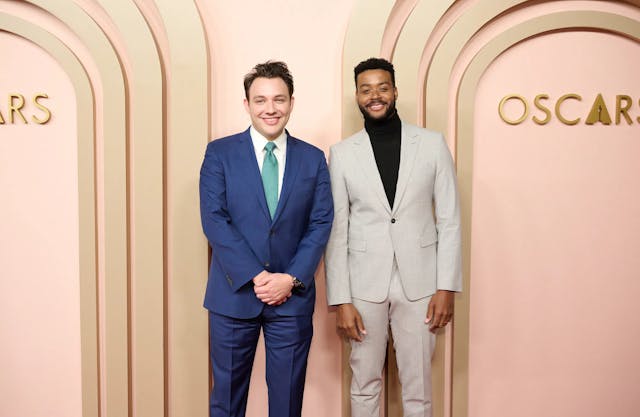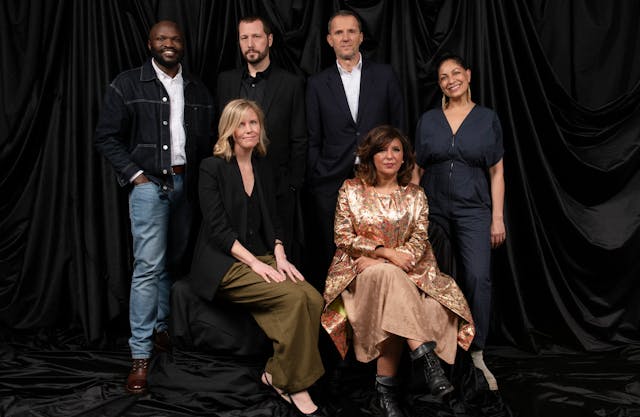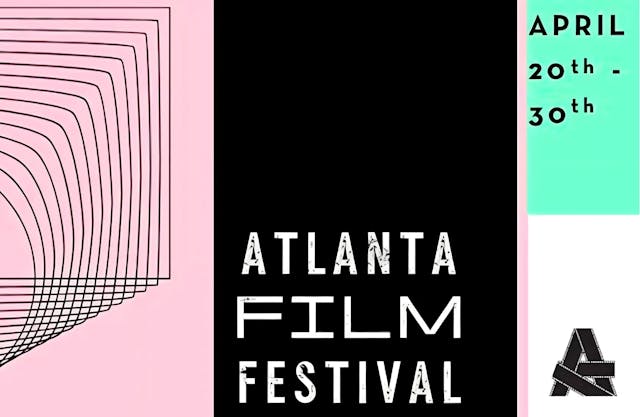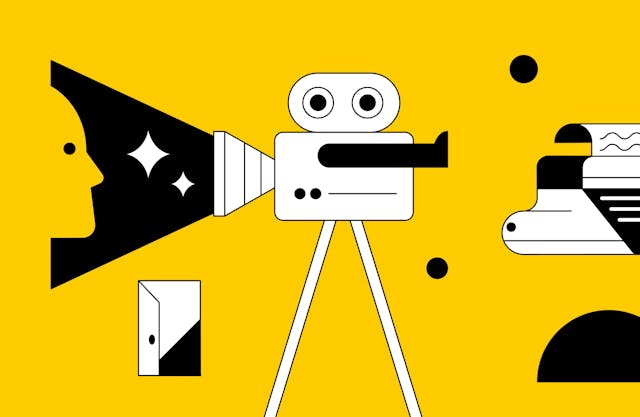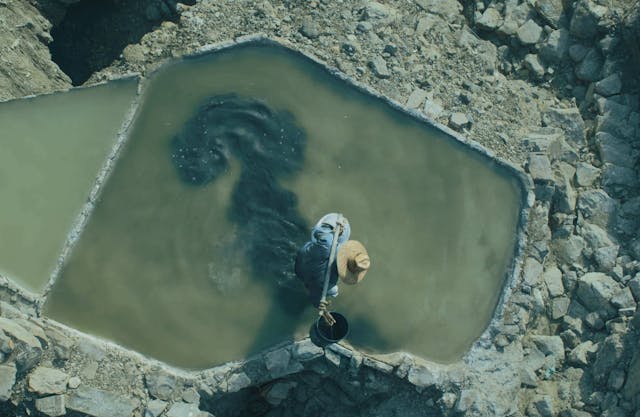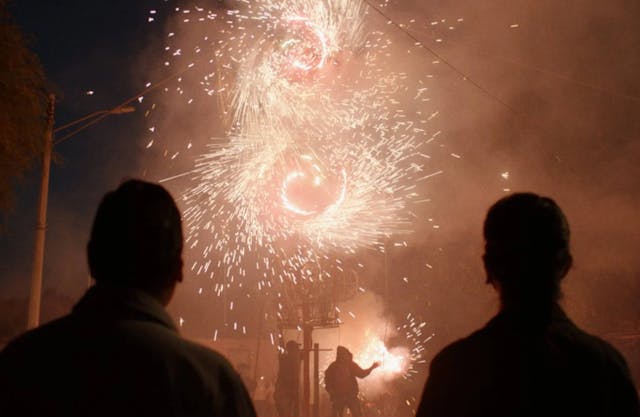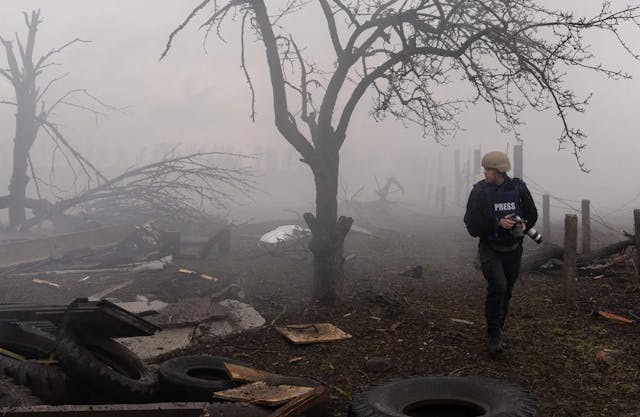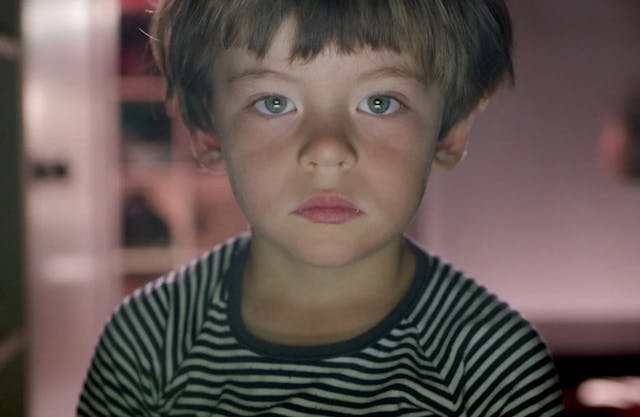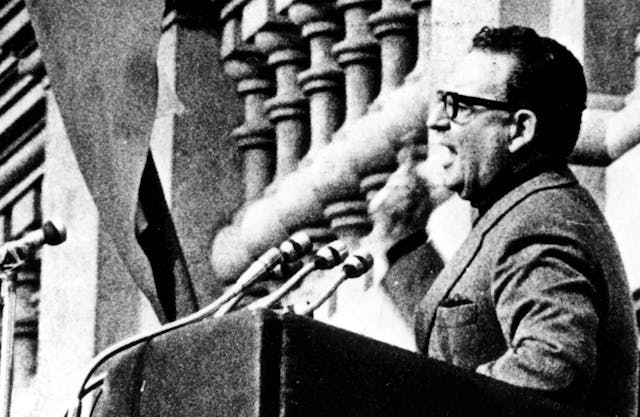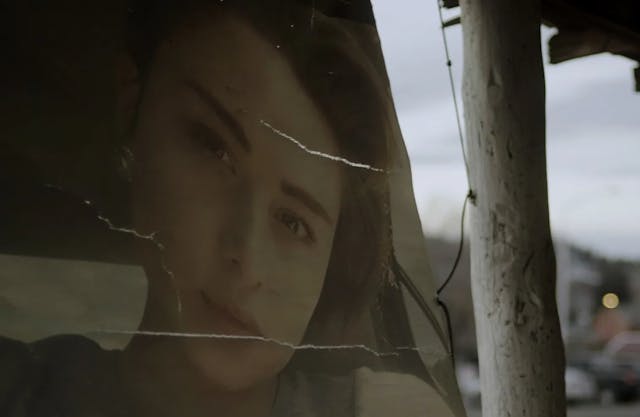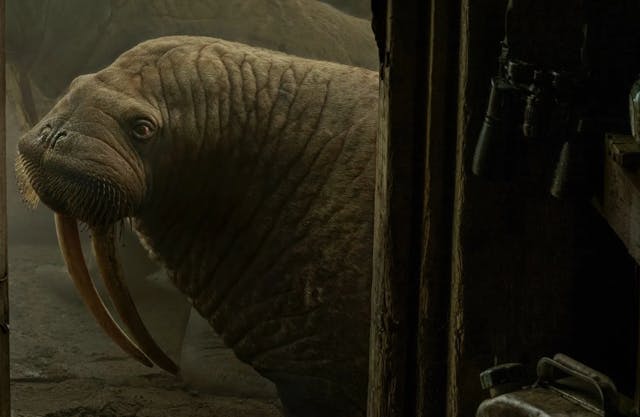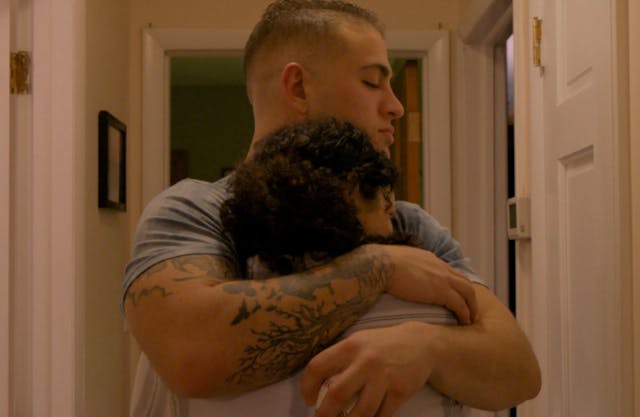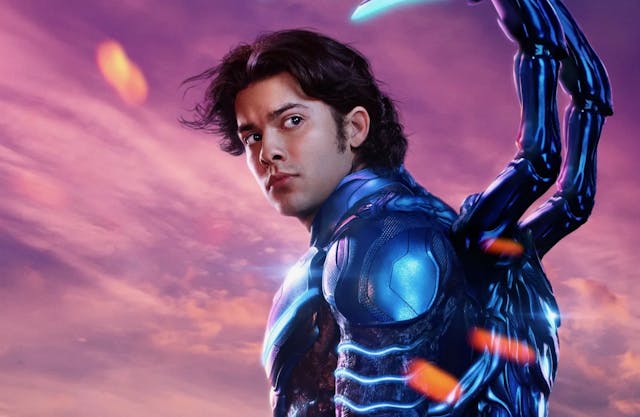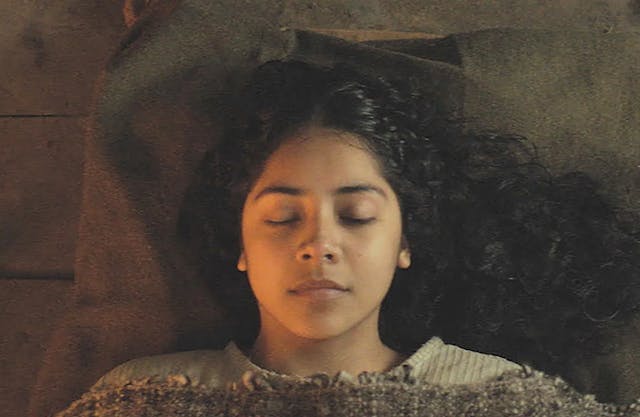Lost Song: Chris Scott and "Nowhere Man and a Whiskey Girl"
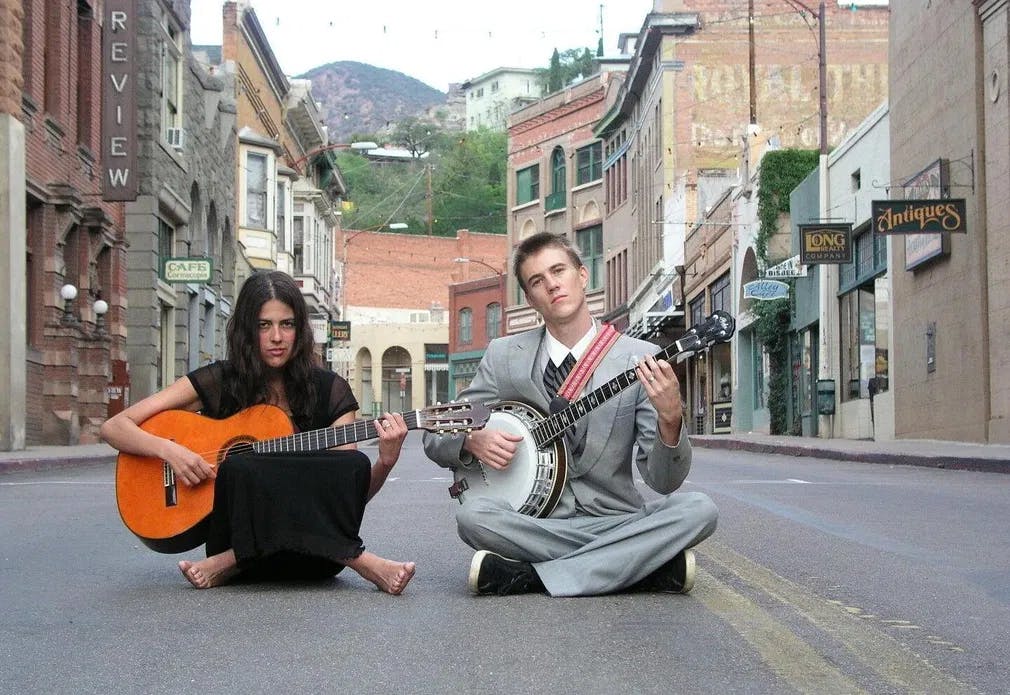
Two for the road: Amy Lopez and Derick Ross make beautiful music together in "Nowhere Man and a Whiskey Girl". / Photo courtesy of Arizona Film Festival & Shoplifter Films
Full disclosure: I did not know the music of Nowhere Man and a Whiskey Girl before watching Chris Charles Scott's beautiful documentary.
Derick Ross and Amy Lopez came up with their band name by combining the titles of songs by The Beatles and Gillian Welch. The first time you listen to Amy, her voice hits you like a ton of bricks. Burning questions come at you fast: Who is this lost sister of Billie Holiday, Joanna Newsom, and Amy Winehouse? How come I have not heard of her before? The answer comes in this striking movie, rich in musical performances that give you both the joy of discovery and a sense of loss. The indie film doc is a departure for director Chris Charles Scott III, who goes for musical biography after the tragicomedy of Class Action Park (available at HBO Max). We talked with Chris about his career, independent filmmaking, and the legend of Amy and her partner in music and life, Derick Ross.
Popflick: You are a Political Science graduate who worked in political campaigns. How did you detour into filmmaking?
Chris Charles Scott III: I reinvented myself. After my last campaign in Las Vegas, I was hired by a creative agency that did campaign work, and I was fired. I got another job working at a political agency and was fired! So I thought, “Man, maybe this is not the route!”
Popflick: The universe was sending you a message.
Chris Charles Scott III: It was sending me a very loud message, consistently sending me the message! I finally took heed and started my creative agency with a buddy of mine from college. Our first client was an oil company in Louisiana that wanted to do some videos to show how cool Shreveport, Louisiana, their city, was. We had never done videos before, and I needed the money. I was about as broke as the Ten Commandments at the time. So we made a video about the history of Shreveport, Louisiana, and it won the Louisiana Endowment Award for Documentary of the Year in 2016. And I was like, “Okay, I do documentaries now!”
Popflick: And you also did a series on Waco, Texas, right?
Chris Charles Scott III: Yes. I went to college at the wonderful Baylor University in Waco, Texas. I wanted to see if I could duplicate the model that we did in Shreveport and if I could duplicate the model that we did in Shreveport. I'm like, "Okay, I have a business model!" We did a four-part series on the history of Waco, Texas. It did just as well as the Shreveport documentaries. One of the documentaries in that series won the Texas Deep of the Heart of Texas Film Festival Grand Jury Award.
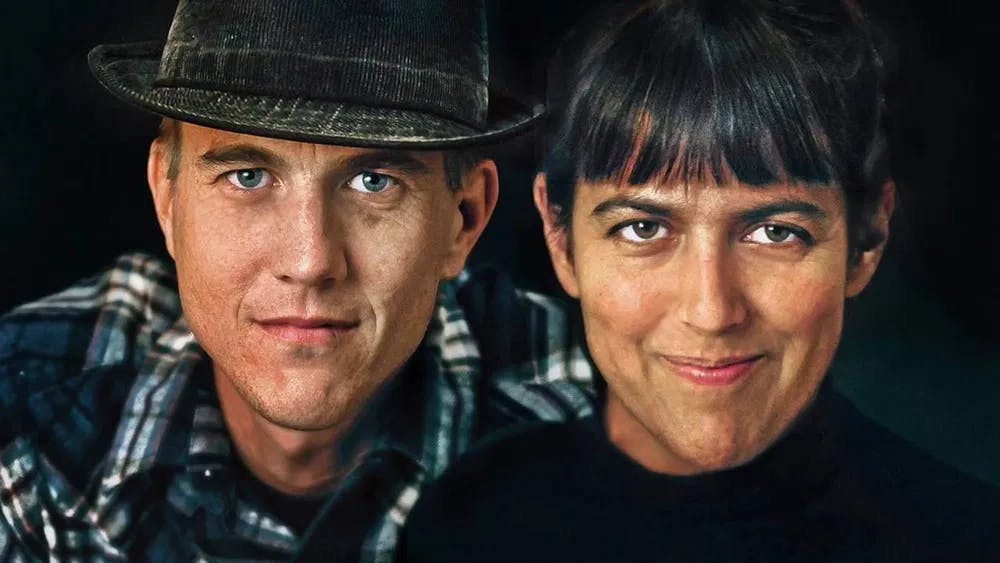
Derick Ross and Amy Lopez, partners in life and art performed as "Nowhere Man and a Whiskey Girl" / Phot courtesy of Shoplifter Films.
Popflick: How did you find the story of Derick and Amy?
Chris Charles Scott III: When people hear that you do documentaries, they have 1 or 2 responses. One response is, “You should do a documentary about me. My life is so wacky and crazy!” The second response you get is, “Oh, have you heard the story about so and so”? Class Action Park was brought to me by a friend, Seth Porges.
I was on a golf course, and the guy who was golfing with me found out I did documentaries, and he said, "Man, I know you hear a lot of pitches, but I have a compelling story that I always thought could make a good documentary." And I said, What's the story? And for the next 4 or 5 holes, he's explaining the story of Derick and Amy. At the end, he told me about the tragic ending, and I was like, "There's got to be someone who has done this documentary before" because the story was so rich and compelling.
So I went home and I researched. Amy's family attempted to make a documentary but never got off the ground. I contacted Kevin Walsh in Las Vegas and said, "Let's do this, man." He put up the initial funding for the documentary. At the height of COVID, we went down and filmed. This project was waiting for me. We had buried my nephew, who had committed suicide, and then we were in Bisbee, Arizona, telling this story. I brought that pain with me, confusion, the unwanted understanding of the tragedy of a life cut short. I got all of that with me to Bisbee. It allowed me to see this story and these people and their hurt differently.
Popflick: You fell for the story before even listening to Amy sing. How did you feel when you heard her for the first time?
Chris Charles Scott III: I was dating a girl then, and I said, "Come and listen to this." And it was amazing! The first thing I did was I "YouTubed" Amy and Derick. And I said, "This music is so pure. It's so genuine." And I was like, "I don't understand why these people haven't blown up." And then, digging through the story, you realize that the health restraints of Amy held them back from really blowing up, but in their community in Bisbee, Southern Arizona, and Phoenix community, they were rock stars.
Popflick: How did the family react when you approached them to do the project?
Chris Charles Scott III: They reacted favorably but hesitant. We reached out to Doug Stanhope, the comedian you see in the film who was friends with Derick and Amy. He played a big part as a liaison between the family and me. Thanks to his blessing, I got passed on to Amy's family.
Popflick: Derick and Amy are children of the video era. They recorded themselves a lot. How much material did you have to work through to get the movie made?
Chris Charles Scott III: A lot of home footage and the vast majority of the B-roll used in the documentary was shot by the hands of Amy and Derick. It's them telling their own story. And what is so compelling about the footage is that you can see the physical effects of Amy's disease progress. You can see when she was doing great, she was her lively, spry, funny self. And then, those moments when the disease was taking its toll. You're watching them document this in real-time. We were fortunate that they filmed her health journey and they filmed their music journey because we were rewarded with a rich video that did not need commentary.
Popflick: Is there an angle that you could not explore? For example, Derick and Amy were an interracial couple. I think her father was Latino, right?
Chris Charles Scott III: Yes, he was. What's crazy about it is their connection was so strong that I didn't even realize they were an interracial couple until you just said that.
Popflick: Really?
Chris Charles Scott III: Yeah! Amy's family is a beautiful mixed family. When we visited their Wyoming home, we didn't feel like this was a diverse biracial family. They're extremely close, and that leads to Derick's relationship. They brought Derick, and he just sort of melted into the family. I never considered them an interracial couple or not until you said that. And you're exactly right.
Popflick: Have they seen the movie?
Chris Charles Scott III: My relationship with the family became estranged. Towards the end of this, they weren't talking with me. We had a production company come in and take the reins over the finishing of the product, and they spoke more with those people. They liked the film, and it got their approval. I think there are some things they would have done differently. But being a family member means you want to take out or ignore some of the rougher parts of the narrative, the less attractive parts. But the family understood our assignment. We have to tell the whole story. And we left a lot of the uncomfortable subjects in there. You wouldn't tell a truthful story without delving into those things.
Popflick: I think the movie is very striking at portraying how precarious artistic work can be. And on top of it, health issues come into play.
Chris Charles Scott III: The body has to be able to endure the grueling processes of making it as a music performer. You have to be able to tour. That's where performers make their money. You have to one night play in Billings, Montana, and the next night you're in Gary, Indiana. The body just has to be able to endure that type of stress and pressure. In today's digital age, perhaps they could have made money and could have been more discovered on these different digital platforms. But at the end of the day, it's old-fashioned, getting out in front of audiences and playing live venues. If the body can't endure it, you're not going to be able to make the type of money and get the type of exposure that one needs to blow up. And then when you do blow up, you can't go to The Tonight Show in LA, and then you have to be at Coachella.
Popflick: I think the movie has a very strong sense of place. I felt as if I went to the southwest of the United States. Did your previous work with regional documentaries help with this aspect?
Chris Charles Scott III: Well, I believe that who you are is just as important to your life success as where you are. Amy and Derek found the best place for them in Bisbee, Arizona. It gave them room to be on their quirky selves, live their unusual life, and play their beautiful music. And this is all done within a community that accepted and embraced them. They were loved in Tucson. They were loved in Phoenix. They were loved in Arizona. And so definitely establishing the place of Arizona as a character, as a huge supporting character in this film was very important. I think that if you take away Arizona and plug them like in LA, they would have been lost in the sauce. Arizona was their breeding ground for everything that was Derek and Amy. And so, yes, that Arizona wind, that Arizona soil, that Bisbee tunnel, everything in the location speaks to who they were.
Popflick: The tunnel that every couple who goes through it ends up breaking up?
Chris Charles Scott III: That's real. My girlfriend and I visited Bisbee together. So they say that once you go through the tunnel, like, both time and space sort of merge and that you're entering some sort of vortex where the rules of normal Earth do not apply. If you're in a relationship, you're going to be broken up because that tunnel breaks you up. Something in that tunnel. And sure enough, I am no longer with that girl. Oh, and I drove through the tunneland the relationship became a casualty of Bisbee. It became another casualty of the tunnel. I am a statistic. Folks, it is real. If you go to Bisbee, do not go with someone you love.
Popflick: Is there any other way to get into town?
Chris Charles Scott: There is no other way to get into town, so take a solo trip!
Popflick: What advice would you give to people who want to get into independent filmmaking?
Chris Charles Scott III: Find great stories and find great characters. And then find a great crew. I've been working with the same crew since The Shape of Shreveport days. We do things very quickly. We do things very professionally. We do things very awesomely. There are platforms, and there's technology around that allows you to go and make your films. And now we live in a world where content is king. People are buying and consuming great content. My advice is to just go do it. My second piece of advice is that if you're not good at it, you know, either work on it or stop. Filmmaking is not for everyone. But if you're going to do it, find you a great story, but most of all, find you great characters and then get out of the way.
Popflick: What's your next film? What are you working on right now?
Chris Charles Scott III: The fashion house Hermès has a 190-year history, and they've only hired one American to ever design for them, and that American is an 81-year-old black guy who lives in a rundown house in Waco.Texas. For the last 40 years, while he's been designing million-dollar scarves for Hermès, he's been working the late night shift at the Waco Post office.
Popflick: That's awesome.
Chris Charles Scott III: This story is just so amazing. His name is Kermit Oliver. He's such an amazing person. And working with Hermès has been amazing. They discovered a rare talent. And now the world, through our documentary, is also about to discover that rare talent. We are just wrapping postproduction for that and are in talks with a distributor.
* "Nowhere Man and a Whiskey Girl" is available to stream on the movie's official webpage. Derick and Amy's musical catalog is available on all music streaming platforms, including Apple Music and Spotify.
Want to get an email when we publish new content?
Subscribe today

